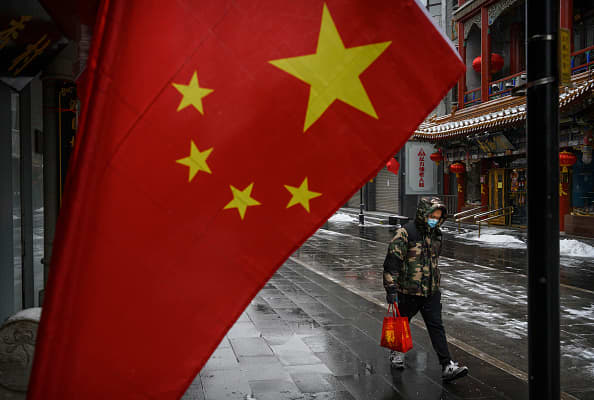
A Chinese man wears a protective mask as he walks during a snowfall in an empty and shuttered commercial street on February 5, 2020 in Beijing, China.
Kevin Frayer | Getty Images
The new coronavirus — believed to have first appeared in the Chinese city of Wuhan — is often compared to SARS, which originated in China's Guangdong province in November 2002 before spreading globally.
The two diseases come from the same large family of viruses that usually infect animals but can sometimes evolve and spread to humans. Investors and analysts often compare the two viruses to gauge the potential economic impact from the latest outbreak.
China's government has taken more drastic moves this time to contain the new coronavirus, which has infected and killed more people than SARS did. That's one reason why an increasing number of economists have forecast a larger hit to the Chinese — and global — economy from the new virus compared with SARS in 2003.
Here are four charts that show how SARS affected the Chinese economy 17 years ago.
China's economic slowdown
Disruptions in economic activity during the SARS outbreak dragged down China's growth from 11.1% year over year in the first quarter of 2003 to 9.1% in the following three months, according to data from the National Bureau of Statistics of China.
The then-sixth largest economy in the world rebounded in the subsequent quarters to register an annual growth rate of 10% — quicker than the previous year's 9.1%, according to Refinitiv. But various estimates showed that China's annual growth in 2003 could have been 0.5 to 1 percentage points higher without disruptions from SARS.
This time, several economists said the new coronavirus will mostly hit China's first-quarter growth. Some banks and research houses have slashed their forecasts for China's full-year growth by 0.2 to 0.7 percentage points — to as low as 5% in 2020.
Fall in retail sales growth
The retail sector in China was among the worst hit by the SARS epidemic. Growth in retail sales moderated to 4.3% in May 2003 — the slowest pace on record, according to Refinitiv.
Analysts have said that retail is once again likely to suffer the most from the spread of the new coronavirus, especially after the Chinese government locked down cities and restricted travel within the country.
But as with the SARS experience, economists said retail sales in China could bounce back after the new coronavirus is contained. That's when consumers would go ahead with the spending that was held back by the virus outbreak, some analysts said.
Hit to industrial output
The industrial segment was also hit by the SARS epidemic, with growth in production slowing to 13.7% in May — the slowest expansion seen in the whole of 2003, Refinitiv data showed.
The drag on China's industrial production from the new coronavirus could be more severe, some analysts said. That's because factories in multiple major Chinese cities have remained shut as authorities rush to contain the virus, they said.
Economists from French bank Societe Generale said they expect the coronavirus "to be brought under control" in the later part of the first quarter, which would allow industrial firms to "raise capacities to meet orders." But the economists warned that the situation in China may not improve as they expect.
Steady trade volume
Growth in China's imports moderated following the SARS outbreak, but the expansion in exports was steady throughout 2003, official data showed.
The global economy was coming out of a downturn in 2001 to 2002 and demand for China's exports was just picking up when the SARS outbreak occurred. That helped the Chinese economy to recover from the epidemic, said Australian bank Macquarie.
But economists from S&P Global Ratings said both imports and exports will be hit this time due to "supply outages and disruptions to the logistics networks."
"how" - Google News
February 11, 2020 at 08:50AM
https://ift.tt/37hPqLr
4 charts show how SARS hit China's economy nearly 20 years ago - CNBC
"how" - Google News
https://ift.tt/2MfXd3I
Bagikan Berita Ini














0 Response to "4 charts show how SARS hit China's economy nearly 20 years ago - CNBC"
Post a Comment